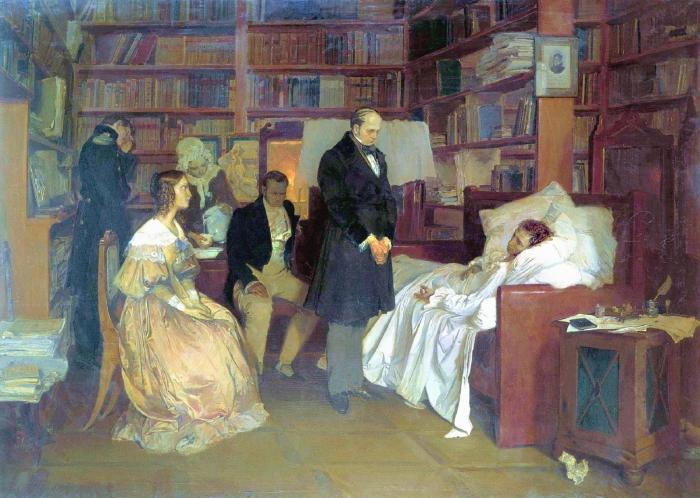Lermontov is a great Russian poet, playwright and prose writer, known throughout the world for his magnificent works that have enriched Russian culture. In the classical literature of Russia, Lermontov rightfully takes the second place after A.S. Pushkin.
These two well-known names are connected by an invisible thread, since it was the tragic death of A.S. Pushkin, who died in 1837 from a severe wound in a duel, which served as an involuntary reason for the rise of the poetic star Lermontov, who first became famous for his poem "On the Death of a Poet."
An analysis of Lermontov’s poem, The Death of a Poet, provides rich food for thought. This poem, in the form in which we know it - consisting of three parts (the first part - from 1 to 56 stanzas, the second part - from 56 to 72 stanzas, and the epigraph), did not take its finished form immediately. The very first edition of the poem was dated the 28th of January, 1837 (one day before Pushkin’s death) and consisted of the first part, ending with the stanza “and its seal on the lips”.

These 56 stanzas of the first part, in turn, are conditionally divided into two relatively independent fragments, united by a common theme and literary pathos. An analysis of the poem “Death of a Poet” reveals the differences between these fragments: the first 33 stanzas are written in a dynamic three-foot iambic and are full of indignation at the death of the poet, revealing in her not a tragic accident, but a murder caused by the cold indifference of the “empty hearts” of secular society, its misunderstanding and the condemnation of the freedom-loving creative spirit of the poet Pushkin.
Carrying out further analysis of the poem “Death of the Poet”, we see that the second part of the first fragment, consisting of the following 23 stanzas, differs from the first by changing the poetic size to a four-foot iambic. The theme of the narrative also changes from a discussion of the causes of death to a direct denunciation of the upper world and all its representatives - “vile slanderers”. The author is not afraid to cast, in the words of A.V. Druzhinin, an “iron verse” in the insolent face of those who are not shy about mocking the blessed memory of the great poet and man, as this detailed analysis of the poem shows us. Lermontov wrote The Death of a Poet, without worrying about the consequences, which in itself is already a feat. Making an analysis of the poem Death of a Poet, its second part, containing stanzas from the 56th to the 72nd, we notice that the mournful elegy of the first part is replaced by an evil satire in it.
The epigraph, however, appeared only much later, when the poet was required to provide the Emperor with a handwritten copy of the poem for review. An analysis of the poem Death of a Poet shows that this epigraph was borrowed by the poet from the Wenceslas tragedy of the French playwright Jean Rotroux.
It is known that the entire court society and the Emperor Nicholas I himself “appreciated” the hot creative impulse of a young genius, resulting in a poetic form, since this work provoked a very negative assessment of the ruling authorities and was described as “shameless free-thinking, more than criminal”. The result of this reaction was the initiation of the case “On Inadmissible Poems ...”, followed by the arrest of Lermontov in February 1837 and the poet’s exile (under the guise of a service) to the Caucasus.